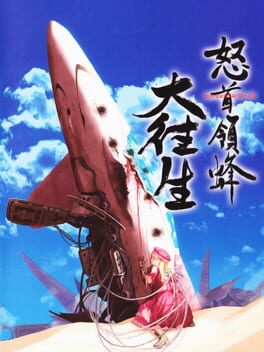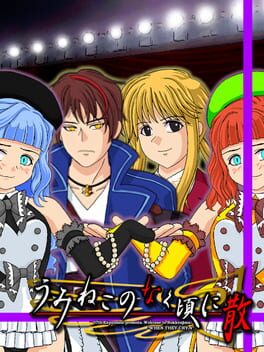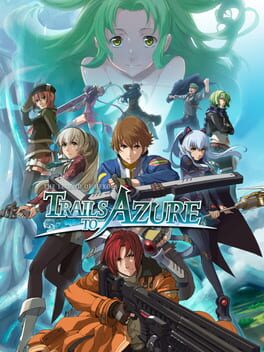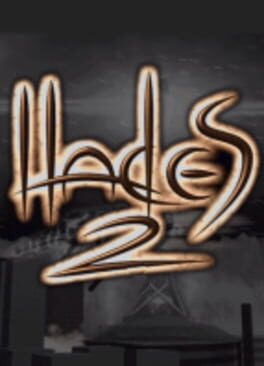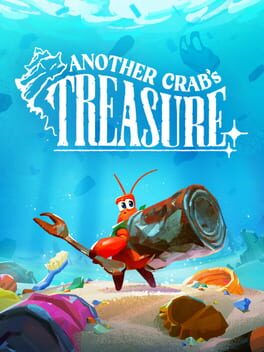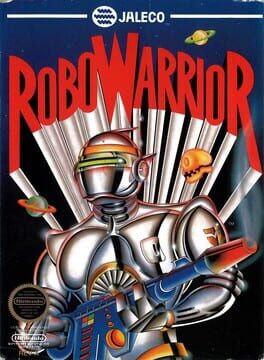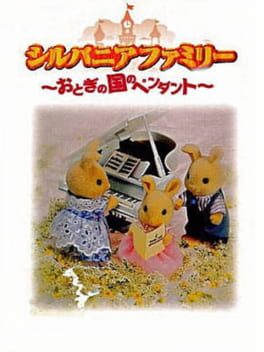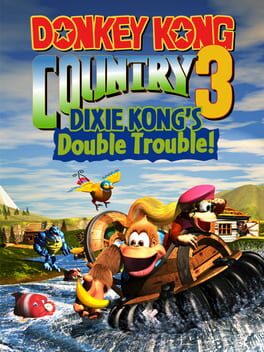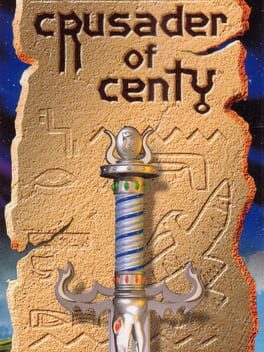MelosHanTani
BACKER
129 Reviews liked by MelosHanTani
DoDonPachi DaiOuJou
2002
It's not that hard to make a bullet hell that puts you on the tightrope, much less a difficult one. It's enough to fill the screen of bullets with any excuse, the natural reaction will be to feel overwhelmed looking for the few safe spots at hand. What is hard to do is to achieve this level of creativity and elegance.
It is not only that DaiOuJou is the summit (or at least one of them) of a very specific style (danmaku) developed by a very specific circle (CAVE, starting from the impulse left by Toaplan and other descendants such as Raizing or Takumi) or a very specific person (Tsuneki Ikeda, who had been defining his style here for more than a decade since his beginnings in Toaplan), but it is a nonstop of ideas that, always maintaining a stylistic cohesion, keep each playthrough fresh because of its radical approach variations.
Something as simple, satisfying and seen afterwards as the sequence of giant enemies constantly canceling bullets when destroyed here is nothing more than a section of a level. Getting across between bullets, an easy method to achieve tension as seen in Mushihimesama Futari, a game a bit exceeding in this resource, achieves elegance by building on varied layers of bullet sweeps. A clear example is the wasp section of the fifth level. Not only stands out because of making the small enemies follow a very peculiar rail movement, or because of their alternative appearances covering the entire width of the game, or because of being protected by giant wasps that serve as a shield and as another layer of bullets to the obstacle course, but stands out because of the creativity and care of the whole. Because of having to rethink a new strategy when everything seemed under control.
The slightly superior Black Label version also enhances one of the greatest virtues of the original game that represents its philosophy very well: the hyper. A double-edged weapon that allows you to deal more damage and cover more screen in exchange of increasing the speed and cadence of enemy bullets, a mechanic that in this revision appears more frequently, encouraging to risk and improvise, the moments where the spirit of the style truly shines.
Of course, it could be criticized that the CAVE or Ikeda ideas are conservative, and even that they have given birth to descendants incapable of innovating making certain rules as unbreakable laws. However, to me it is not an accurate criticism. The fear, inexperience or ineptitude of some when it comes to achieving their own style or such a level of elegance is not the fault of the original inspiration, and the obsessive reiteration of an author or a circle on the same philosophy is far from the easily confused repetition for comfort and security. If anything, what is interesting about the style that culminates here, and that would attempt to reach the general public in later games, is giving everything for a genre lost in an arcade style that was already considered little more than a relic. Knowing that few were going to play and even fewer comprehend.
If what we want is the rare maturity in the medium of someone capable of working their style until it becomes unique, robust and unrecognizable from the influences that germinated it, like the style of Toaplan of which there is no trace left, DoDonPachi DaiOuJou is nothing but one of the clearest examples.
It is not only that DaiOuJou is the summit (or at least one of them) of a very specific style (danmaku) developed by a very specific circle (CAVE, starting from the impulse left by Toaplan and other descendants such as Raizing or Takumi) or a very specific person (Tsuneki Ikeda, who had been defining his style here for more than a decade since his beginnings in Toaplan), but it is a nonstop of ideas that, always maintaining a stylistic cohesion, keep each playthrough fresh because of its radical approach variations.
Something as simple, satisfying and seen afterwards as the sequence of giant enemies constantly canceling bullets when destroyed here is nothing more than a section of a level. Getting across between bullets, an easy method to achieve tension as seen in Mushihimesama Futari, a game a bit exceeding in this resource, achieves elegance by building on varied layers of bullet sweeps. A clear example is the wasp section of the fifth level. Not only stands out because of making the small enemies follow a very peculiar rail movement, or because of their alternative appearances covering the entire width of the game, or because of being protected by giant wasps that serve as a shield and as another layer of bullets to the obstacle course, but stands out because of the creativity and care of the whole. Because of having to rethink a new strategy when everything seemed under control.
The slightly superior Black Label version also enhances one of the greatest virtues of the original game that represents its philosophy very well: the hyper. A double-edged weapon that allows you to deal more damage and cover more screen in exchange of increasing the speed and cadence of enemy bullets, a mechanic that in this revision appears more frequently, encouraging to risk and improvise, the moments where the spirit of the style truly shines.
Of course, it could be criticized that the CAVE or Ikeda ideas are conservative, and even that they have given birth to descendants incapable of innovating making certain rules as unbreakable laws. However, to me it is not an accurate criticism. The fear, inexperience or ineptitude of some when it comes to achieving their own style or such a level of elegance is not the fault of the original inspiration, and the obsessive reiteration of an author or a circle on the same philosophy is far from the easily confused repetition for comfort and security. If anything, what is interesting about the style that culminates here, and that would attempt to reach the general public in later games, is giving everything for a genre lost in an arcade style that was already considered little more than a relic. Knowing that few were going to play and even fewer comprehend.
If what we want is the rare maturity in the medium of someone capable of working their style until it becomes unique, robust and unrecognizable from the influences that germinated it, like the style of Toaplan of which there is no trace left, DoDonPachi DaiOuJou is nothing but one of the clearest examples.
Yeah, I'm completely checked out. First 3/4s of the tea party was maybe the most hyped I've ever been playing umineko but the sappy way it resolves ruins it, and the rest of the episode's a snoozefest.
Gonna play ep 8 of course but this is a huge step down from higurashi. Ryukishi focused so much on the pointlessly reader-adversarial mystery that he forgot to tell a good story.
Gonna play ep 8 of course but this is a huge step down from higurashi. Ryukishi focused so much on the pointlessly reader-adversarial mystery that he forgot to tell a good story.
Animal Well
2024
Animal Well Done
Like seemingly everyone, my appeal and interest in 2024's Animal Well stemmed from my even much earlier interest in Videogamedunkey, the head honcho of its publisher BIGMODE and longtime Youtube veteran. A fan of his for over a decade, cutting my teeth watching his now archaic League of Legends content, I knew that he had a knack (heh) for games that were fun if nothing else. I've disagreed with my fair share of his takes, but I knew with the announcement of Animal Well that there was a vision he had in Billy Basso's breakout title. Like many others, I waited with bated breath with more information about the game's mechanics and release date. Release came and reviews were staggeringly high for the ambitious sub fifty megabyte title, whose marketing campaign effectively boiled down to "Let Dunkey cook."
A disclaimer for this review: I struggle with Metroidvania's from a personal standpoint. I've played a handful of Metroid's, got into The Messenger, and maybe one whole hour of Bloodstained: Ritual of the Night, but I could never stick with them on the principal of how they play. Without a consistent path of clear exploration towards narrative completion, I struggle for reasons unknown. With Metroid I had a hard time putting together item unlocks to their eventual applications, and didn't do too well in remembering where to traverse. My problems with previous experiences translated almost completely to Animal Well which was... well quite a good game regardless.
Animal Well is gorgeous, one of the factors most apparent in its reveal. Each screen is filled to the brim with colour and purpose, the backdrops consisting mainly of statues, mysterious creatures, and absconding movements of water. As my little blob made his way through the games sub ten hour runtime (probably shorter if chasing the main path,) my eyes scanned just about everything within the environment because of the visual reward that entailed. One touch I greatly appreciated is the (optional) setting that places faux CRT scanlines on the screen for a more mysterious vintage feel. For a game as consistently dark and dimly lit as Animal Well, having a feature that exaggerates its despair and gorgeous loneliness like that accents your time with the game in quite a great way.
Platforming and movement in Animal Well is fairly par for the course within the realm of 2D platformers and metroidvanias as a whole. You use a small selection of items naturally found through exploration for traversal and puzzle completion. Apt timing is required for successful jumps, and running is done at a brisk enough pace to make the game feel like it has a sense of urgency and quick completion to it. One thing I do want to commend the title on within this space is that it never feels like it is trying to do too much or require a finesse in perfect timing or long jump sequences. Though the puzzles can become slightly infuriating and rub you the wrong way, the issue rarely lied in me having to gamble on a perfect platforming sequence.
I said "rarely" in that last paragraph because of one of my main gripes with Animal Well, which I might as well start off with now. One of the notable features of the game is that there is no combat... but the catch is that there are enemies. How do you fight enemies in a game where you can't actually hit them? By running away! This isn't the end of the world in theory but it leads into another issue with Animal Well: the save system. Not unfamiliar for the genre but saving and checkpoints happen at telephones scattered around the map. These are mostly well located and central to places in which you spend your time and often do unlock as you progress to become even more centralized than you first encounter them, but not all is well that ends well. There are several mandatory chasing encounters in which you must run away from a big bad that follows you screen to screen. Death, which can happen by taking damage down to zero hearts or being crushed by an object, leads you to reset at the most recently visited aforementioned telephone. I spent a disgusting amount of time last night failing in the late stages of a chase sequence only to reset at a telephone, having to run all the way to the encounter, and then run all the way to attempt to complete the segment. As a Souls player I am no stranger to runbacks, but doing this ad nauseum and having to repeat and repeat which the occasional random instant death on a platforming sequence was infuriating. Animal Well in multiple points lacks respect for player free time in having to traverse to an area where you had progressed. This becomes more annoying in the chases because you can't pause and open the map... an unfortunate page to take out of the Dark Souls cook book.
Overall Animal Well is a phenomenal debut title for BIGMODE and an impressive title put forward by Billy Basso. Even though there's no real narrative to stick to, the save system requires a lot of work, and the chase scenes are needlessly grifting... this game has a lot to like about it. I'd recommend Animal Well to casual Dunkey fans or fans of Metroidvania's.
Like seemingly everyone, my appeal and interest in 2024's Animal Well stemmed from my even much earlier interest in Videogamedunkey, the head honcho of its publisher BIGMODE and longtime Youtube veteran. A fan of his for over a decade, cutting my teeth watching his now archaic League of Legends content, I knew that he had a knack (heh) for games that were fun if nothing else. I've disagreed with my fair share of his takes, but I knew with the announcement of Animal Well that there was a vision he had in Billy Basso's breakout title. Like many others, I waited with bated breath with more information about the game's mechanics and release date. Release came and reviews were staggeringly high for the ambitious sub fifty megabyte title, whose marketing campaign effectively boiled down to "Let Dunkey cook."
A disclaimer for this review: I struggle with Metroidvania's from a personal standpoint. I've played a handful of Metroid's, got into The Messenger, and maybe one whole hour of Bloodstained: Ritual of the Night, but I could never stick with them on the principal of how they play. Without a consistent path of clear exploration towards narrative completion, I struggle for reasons unknown. With Metroid I had a hard time putting together item unlocks to their eventual applications, and didn't do too well in remembering where to traverse. My problems with previous experiences translated almost completely to Animal Well which was... well quite a good game regardless.
Animal Well is gorgeous, one of the factors most apparent in its reveal. Each screen is filled to the brim with colour and purpose, the backdrops consisting mainly of statues, mysterious creatures, and absconding movements of water. As my little blob made his way through the games sub ten hour runtime (probably shorter if chasing the main path,) my eyes scanned just about everything within the environment because of the visual reward that entailed. One touch I greatly appreciated is the (optional) setting that places faux CRT scanlines on the screen for a more mysterious vintage feel. For a game as consistently dark and dimly lit as Animal Well, having a feature that exaggerates its despair and gorgeous loneliness like that accents your time with the game in quite a great way.
Platforming and movement in Animal Well is fairly par for the course within the realm of 2D platformers and metroidvanias as a whole. You use a small selection of items naturally found through exploration for traversal and puzzle completion. Apt timing is required for successful jumps, and running is done at a brisk enough pace to make the game feel like it has a sense of urgency and quick completion to it. One thing I do want to commend the title on within this space is that it never feels like it is trying to do too much or require a finesse in perfect timing or long jump sequences. Though the puzzles can become slightly infuriating and rub you the wrong way, the issue rarely lied in me having to gamble on a perfect platforming sequence.
I said "rarely" in that last paragraph because of one of my main gripes with Animal Well, which I might as well start off with now. One of the notable features of the game is that there is no combat... but the catch is that there are enemies. How do you fight enemies in a game where you can't actually hit them? By running away! This isn't the end of the world in theory but it leads into another issue with Animal Well: the save system. Not unfamiliar for the genre but saving and checkpoints happen at telephones scattered around the map. These are mostly well located and central to places in which you spend your time and often do unlock as you progress to become even more centralized than you first encounter them, but not all is well that ends well. There are several mandatory chasing encounters in which you must run away from a big bad that follows you screen to screen. Death, which can happen by taking damage down to zero hearts or being crushed by an object, leads you to reset at the most recently visited aforementioned telephone. I spent a disgusting amount of time last night failing in the late stages of a chase sequence only to reset at a telephone, having to run all the way to the encounter, and then run all the way to attempt to complete the segment. As a Souls player I am no stranger to runbacks, but doing this ad nauseum and having to repeat and repeat which the occasional random instant death on a platforming sequence was infuriating. Animal Well in multiple points lacks respect for player free time in having to traverse to an area where you had progressed. This becomes more annoying in the chases because you can't pause and open the map... an unfortunate page to take out of the Dark Souls cook book.
Overall Animal Well is a phenomenal debut title for BIGMODE and an impressive title put forward by Billy Basso. Even though there's no real narrative to stick to, the save system requires a lot of work, and the chase scenes are needlessly grifting... this game has a lot to like about it. I'd recommend Animal Well to casual Dunkey fans or fans of Metroidvania's.
Cleared on Hard, finished all side-quests. Finished it a while ago, but it's still stuck in my craw, so I feel like writing a review. I'm not going to spoil anything directly but I'm definitely giving impressions of the whole game, so if you're particularly sensitive to spoilers maybe dip now.
This was obviously lovely in a lot of ways, but I think this is where I get off the Trails train for a while. Trails has never been big on stakes, but the lack of lethality to anything in Zero and Azure is just devastating. There's no weight to this anymore. The big scary villains aren't scary because I know no one's ever ever going to die.
It's especially weird because Zero gets most of its resonance from paying off an extremely dark character thread set up in 3rd. You'd think they'd realize it's good to have some edge every now and then in a massive fantasy epic. But if there was any edge left in Zero then it's completely gone in Azure; this is one of the most bloodless stories ostensibly about revolution I've ever seen. The new emphasis on light dating sim mechanics means we also don't get a strong core romance like in Sky. I didn't get to see any of the meager sparks between Elie and Lloyd pay off because I didn't buy her enough stuffed animals to put in her room, whoops.
It's a shame because the character writing is as lovely as ever. I finally upped the difficulty to Hard for this one and I should've done it sooner, it feels amazing and the bosses are super-chunky and fun to unravel. The music and art and setting texture are as gorgeous as always. But at this point Trails is a romance where nobody fucks and a war epic where nobody dies. I've lost my patience for that for the moment.
This was obviously lovely in a lot of ways, but I think this is where I get off the Trails train for a while. Trails has never been big on stakes, but the lack of lethality to anything in Zero and Azure is just devastating. There's no weight to this anymore. The big scary villains aren't scary because I know no one's ever ever going to die.
It's especially weird because Zero gets most of its resonance from paying off an extremely dark character thread set up in 3rd. You'd think they'd realize it's good to have some edge every now and then in a massive fantasy epic. But if there was any edge left in Zero then it's completely gone in Azure; this is one of the most bloodless stories ostensibly about revolution I've ever seen. The new emphasis on light dating sim mechanics means we also don't get a strong core romance like in Sky. I didn't get to see any of the meager sparks between Elie and Lloyd pay off because I didn't buy her enough stuffed animals to put in her room, whoops.
It's a shame because the character writing is as lovely as ever. I finally upped the difficulty to Hard for this one and I should've done it sooner, it feels amazing and the bosses are super-chunky and fun to unravel. The music and art and setting texture are as gorgeous as always. But at this point Trails is a romance where nobody fucks and a war epic where nobody dies. I've lost my patience for that for the moment.
Hades 2
2001
Dark Souls III
2016
RoboWarrior
1987
SeaBed
2016
In terms of the intensity and depth of the emotional response it engendered in me, Seabed compares neatly with The House in Fata Morgana. It takes a completely different, much quieter and subtler path to get there, obviously. Fata Morgana gets there with the most hard hitting melodrama possible. Seabed gets there through countless quiet moments, all working in concert to slowly weave a spell over you without you even realizing.
As a text game dev, I deeply appreciate the presentation. The whole story is told through VA-less NVL-mode walls of text, borrowed royalty-free music, as few VN presentation tricks as humanly possible, and a combo of blurred photo and cheap blender backgrounds. The only major points of aesthetic interest are the beautiful character illustrations by hide38 (who also wrote the script).
And the story still hits like a truck. When you make your characters and their longings feel this real in the reader's heart, you don't need voice acting or a bunch of expensive one-off assets. Seabed does exactly what it needs to with the presentation to support the writing, then gets out of the way and lets the story speak for itself. I think that's really admirable, and speaks to a confidence that a lot of devs would benefit from.
If all this sounds back-handed, it shouldn't. Some of the most well-loved VNs in history are doujin games like Higurashi or Tsukihime, which used similar aesthetic shortcuts. I cherish many VNs with super-loved-on presentation. But my favorites will always be the ones that make me believe in their stories, and you get there first and foremost with strong writing.
Seabed is as affecting a story as any visual novel I've read. I don't have much to say beyond that that wouldn't spoil the shape of the story (hence why I spent three paragraphs soapboxing about VN direction). If you're up for the slowest of slow burns, and you appreciate VNs with grown-up theming that don't talk down to you, give this one a read.
As a text game dev, I deeply appreciate the presentation. The whole story is told through VA-less NVL-mode walls of text, borrowed royalty-free music, as few VN presentation tricks as humanly possible, and a combo of blurred photo and cheap blender backgrounds. The only major points of aesthetic interest are the beautiful character illustrations by hide38 (who also wrote the script).
And the story still hits like a truck. When you make your characters and their longings feel this real in the reader's heart, you don't need voice acting or a bunch of expensive one-off assets. Seabed does exactly what it needs to with the presentation to support the writing, then gets out of the way and lets the story speak for itself. I think that's really admirable, and speaks to a confidence that a lot of devs would benefit from.
If all this sounds back-handed, it shouldn't. Some of the most well-loved VNs in history are doujin games like Higurashi or Tsukihime, which used similar aesthetic shortcuts. I cherish many VNs with super-loved-on presentation. But my favorites will always be the ones that make me believe in their stories, and you get there first and foremost with strong writing.
Seabed is as affecting a story as any visual novel I've read. I don't have much to say beyond that that wouldn't spoil the shape of the story (hence why I spent three paragraphs soapboxing about VN direction). If you're up for the slowest of slow burns, and you appreciate VNs with grown-up theming that don't talk down to you, give this one a read.
very endearing. none of the minigames are very good and the gardening loop is really barebones but that hardly matters in a world this charming and effortlessly cute.
the leveling up for the time you can spend outside of your home and there being a time restriction in the first place can be read as a nuisance but it also encourages you to actually become familiar with its world and be excited by how new pieces of it unlock and how new shortcuts pop up, also adding a bit of tension to its small mazes and a touch of planning wrt where you'll go. also recreates the feeling of becoming more confident with yourself and your surroundings as a child upon learning more about them and what makes each person tick, even if in silly ways like "this guy really loves skiing". while having the pop quiz first happen on day 3 is a strange choice it also highlights how much you absorb of this world through just playing more of the game, with the quiz becoming really easy later on. i love this feeling of actually getting to know a game's world, small as this one's is it's still very rewarding to do the sidequests and fill the photo book up and chip away at making the world's flowers bloom again.
the translation patch is really good translation wise, pretty professional script, but i had some technical hiccups which i don't know what caused them: the frying pan sidequest would just Not turn in, my first attempt at playing this got killed really late into it because i couldn't access the seed/drop combination screen anymore and that etched into the save somehow? then i replayed the game with speedups, not doing as much side content, to try to get to the ending, and that menu didn't break but one optional minigame did for reasons also unknown. maybe it's mgba (though i played it on different instances each time, first through the standalone vita app then the retroarch core), maybe it's the patch, i don't know. but that i had the motivation to spend a couple hours farming just to get to a short ending cutscene speaks volumes to how immediately attached i got to this small, colorful 8 bit world with really nice music. the evangelion shito ikusei of sylvanian families, except with gardening that's more barebones than the angel raising and a more developed world. lol these comparisons are stupid
the leveling up for the time you can spend outside of your home and there being a time restriction in the first place can be read as a nuisance but it also encourages you to actually become familiar with its world and be excited by how new pieces of it unlock and how new shortcuts pop up, also adding a bit of tension to its small mazes and a touch of planning wrt where you'll go. also recreates the feeling of becoming more confident with yourself and your surroundings as a child upon learning more about them and what makes each person tick, even if in silly ways like "this guy really loves skiing". while having the pop quiz first happen on day 3 is a strange choice it also highlights how much you absorb of this world through just playing more of the game, with the quiz becoming really easy later on. i love this feeling of actually getting to know a game's world, small as this one's is it's still very rewarding to do the sidequests and fill the photo book up and chip away at making the world's flowers bloom again.
the translation patch is really good translation wise, pretty professional script, but i had some technical hiccups which i don't know what caused them: the frying pan sidequest would just Not turn in, my first attempt at playing this got killed really late into it because i couldn't access the seed/drop combination screen anymore and that etched into the save somehow? then i replayed the game with speedups, not doing as much side content, to try to get to the ending, and that menu didn't break but one optional minigame did for reasons also unknown. maybe it's mgba (though i played it on different instances each time, first through the standalone vita app then the retroarch core), maybe it's the patch, i don't know. but that i had the motivation to spend a couple hours farming just to get to a short ending cutscene speaks volumes to how immediately attached i got to this small, colorful 8 bit world with really nice music. the evangelion shito ikusei of sylvanian families, except with gardening that's more barebones than the angel raising and a more developed world. lol these comparisons are stupid
There's two ways to look at Donkey Kong Country 3: A decent yet underrated send off to DKC that released too late and whose reputation was tarnished by the boom of 3D gaming, or a piece of crap garbage game that replaces Donkey Kong with a baby. A baby!!
Me? I like to think the truth is uh, somewhere in the middle.
While this is wild speculation, the impression I get from Double Trouble is that much of the talent from the last two games vacated before this project began to get to work on titles for the Nintendo 64. The formula is intact, this feels like a proper Donkey Kong Country on its surface, but the level design is so much more flat, gimmicks don't land nearly as well and are often irritating, and outside of a mostly unnecessary but kinda cool overworld, there's not a whole lot that feels like it's pushing these games forward in a positive way. It would not surprise me if this was a Mega Man 5 situation where everyone shrugged and asked "well, what the hell do you do after Diddy's Kong Quest?"
You put a hideous baby in the game, apparently. I don't like babies! I think they're gross! I gag when I see baby-related paraphernalia, I don't want to play as one. Every time I see a baby I think "Ugh. Baby." Babies vomit and crap all over themselves, they cannot forge for food, their skulls are soft, they are not the protagonists of video games! You might protect a baby in a game, but they aren't the stars of their own adventure, you don't put them on the front of a box!!
It's also a little weird that there's three Donkey Kong Country games for the SNES and you only play as DK in the first one, right?
Even the presentation is off. There's this uncanny quality to a lot of the sprites, the music feels very uninspired, and the setting lacks a lot of the charm and uniqueness of the previous games. Yet despite all my misgivings, I don't think Double Trouble is a bad game, so much as it's just mediocre. Diddy's Kong Quest was a tough act to follow, especially for a game coming out on the very tail end of the SNES' lifecycle and during a holiday season where it had to compete with games like Mario 64. I've heard people talk about this game in extremely negative ways, and like, if they played Mario 64 before this - or worse, were expecting Mario 64 for Christmas and got fucking Dixie Kong's Double Trouble instead - I honestly can't say I'd blame them for harboring some long-standing resentment for it. I'd be pretty disappointed, too.
Me? I like to think the truth is uh, somewhere in the middle.
While this is wild speculation, the impression I get from Double Trouble is that much of the talent from the last two games vacated before this project began to get to work on titles for the Nintendo 64. The formula is intact, this feels like a proper Donkey Kong Country on its surface, but the level design is so much more flat, gimmicks don't land nearly as well and are often irritating, and outside of a mostly unnecessary but kinda cool overworld, there's not a whole lot that feels like it's pushing these games forward in a positive way. It would not surprise me if this was a Mega Man 5 situation where everyone shrugged and asked "well, what the hell do you do after Diddy's Kong Quest?"
You put a hideous baby in the game, apparently. I don't like babies! I think they're gross! I gag when I see baby-related paraphernalia, I don't want to play as one. Every time I see a baby I think "Ugh. Baby." Babies vomit and crap all over themselves, they cannot forge for food, their skulls are soft, they are not the protagonists of video games! You might protect a baby in a game, but they aren't the stars of their own adventure, you don't put them on the front of a box!!
It's also a little weird that there's three Donkey Kong Country games for the SNES and you only play as DK in the first one, right?
Even the presentation is off. There's this uncanny quality to a lot of the sprites, the music feels very uninspired, and the setting lacks a lot of the charm and uniqueness of the previous games. Yet despite all my misgivings, I don't think Double Trouble is a bad game, so much as it's just mediocre. Diddy's Kong Quest was a tough act to follow, especially for a game coming out on the very tail end of the SNES' lifecycle and during a holiday season where it had to compete with games like Mario 64. I've heard people talk about this game in extremely negative ways, and like, if they played Mario 64 before this - or worse, were expecting Mario 64 for Christmas and got fucking Dixie Kong's Double Trouble instead - I honestly can't say I'd blame them for harboring some long-standing resentment for it. I'd be pretty disappointed, too.
Crusader of Centy
1994
Crusader of Centy is, at surface value, a fairly competent Zelda clone for the Genesis. Movement is smoother and it leans more towards action, with a sword throw and a pretty freeform sense of momentum. It lacks proper dungeons and puzzle-solving, but it does feature a nice variety of animal buddies that each have their own ability. It's a bit light on content, with most of the levels and bosses feeling rather underdesigned, but it's hard to accuse it of a lack of ambition because its story is, to be frank, completely fucking insane.
The game, set in a fantasy world where monsters used to rule the land, but were then banished by a mysterious light, starts with the protagonist (default name Corona)'s 14th birthday, where he is given, as ordained by the laws of the land, a sword and shield by his worried mother, and sent to adventure in the wild. He then loses the ability to speak with men, causing an actually pretty effective sense of alienation, even though he can now speak with animals. He goes on with his journey with no stated goal, eventually finding out that the reason he can't speak with humans is that the Tower of Babel finished construction, and God did the whole thing preventing all men from understanding one another. There's an episode where you are unwittingly transformed into a monster and get to see how your kind terrifies theirs (this lasts about 2 minutes of playtime), which later sets up the reveal that the monsters are just innocent creatures that humans murder for no reason (no idea why they keep trying to kill you. Self defense?). Eventually you decide to climb up the Tower of Babel, where you throw hands with an alien, then you meet a giant ancient dragon who summons your mom into the fight and starts beating the shit out of her, only to reveal that this was a test of your mettle and that she was just an illusion. Then, you grow a plant on top of the Tower of Babel so you can climb into heaven (which is, obviously, the most unhingedly designed area in the game, made purely to troll players I think) and ask God to cut that whole language thing out. He does, but says humanity sucks and will all go to Hell. Anyways, a magic tornado has appeared, and you can use to travel in time by jumping into it, which lets you witness a few (I think unrelated?) vignettes of the world's past, before letting you travel to the final dungeon, which is where the monsters lived before spilling into the human world again so you can destroy... some divine creature? To reboot the entire universe and stop fantasy racism (by sealing the oppressed monsters into another dimension).
It's easy to make any game sound crazy by just listing plot beats, but I want you to understand that there is very little that I omitted. Centy just goes between a plot beat and another without actually bothering to explain why things are happening. This game doesn't even have a villain or a proper overarching goal, as far as I understand it. Where did the tornado, which plays a key role in the late game, come from, and why does it have these powers? Who knows! It's barely acknowledged, let alone explained. Why do monsters flip-flop between completely reasonable creatures and random encounters? Dunno! I only guessed what the final dungeon was based off one off-hand line, the game doesn't tell you. I think at least some of the blame for this rests on the bad translation (Apparently the EU one is different, might be better to go with that) but the game is very clearly rushed. A lot of the animal buddies see use only once or twice throughout the game, and the whole time travel stuff is clearly a way to reuse stages and enemies they already made. If I had to guess, the devs were trying to make a proper epic of a game, spanning tens of hours and exploring the breadth of themes that Crusader of Centy as is uneasily touches upon, and had to drastically resize the scope of what they were working with. It's a dang shame because as it is, the game feels extremely confused and muddled. I think it's worth a shot if you're interested, it feels ok to play especially when you get the sword throw (the basic slash is a little janky), there's a lot of cool ideas and moments and even if they struggle to come together they can at least be appreciated for what they are.
The game, set in a fantasy world where monsters used to rule the land, but were then banished by a mysterious light, starts with the protagonist (default name Corona)'s 14th birthday, where he is given, as ordained by the laws of the land, a sword and shield by his worried mother, and sent to adventure in the wild. He then loses the ability to speak with men, causing an actually pretty effective sense of alienation, even though he can now speak with animals. He goes on with his journey with no stated goal, eventually finding out that the reason he can't speak with humans is that the Tower of Babel finished construction, and God did the whole thing preventing all men from understanding one another. There's an episode where you are unwittingly transformed into a monster and get to see how your kind terrifies theirs (this lasts about 2 minutes of playtime), which later sets up the reveal that the monsters are just innocent creatures that humans murder for no reason (no idea why they keep trying to kill you. Self defense?). Eventually you decide to climb up the Tower of Babel, where you throw hands with an alien, then you meet a giant ancient dragon who summons your mom into the fight and starts beating the shit out of her, only to reveal that this was a test of your mettle and that she was just an illusion. Then, you grow a plant on top of the Tower of Babel so you can climb into heaven (which is, obviously, the most unhingedly designed area in the game, made purely to troll players I think) and ask God to cut that whole language thing out. He does, but says humanity sucks and will all go to Hell. Anyways, a magic tornado has appeared, and you can use to travel in time by jumping into it, which lets you witness a few (I think unrelated?) vignettes of the world's past, before letting you travel to the final dungeon, which is where the monsters lived before spilling into the human world again so you can destroy... some divine creature? To reboot the entire universe and stop fantasy racism (by sealing the oppressed monsters into another dimension).
It's easy to make any game sound crazy by just listing plot beats, but I want you to understand that there is very little that I omitted. Centy just goes between a plot beat and another without actually bothering to explain why things are happening. This game doesn't even have a villain or a proper overarching goal, as far as I understand it. Where did the tornado, which plays a key role in the late game, come from, and why does it have these powers? Who knows! It's barely acknowledged, let alone explained. Why do monsters flip-flop between completely reasonable creatures and random encounters? Dunno! I only guessed what the final dungeon was based off one off-hand line, the game doesn't tell you. I think at least some of the blame for this rests on the bad translation (Apparently the EU one is different, might be better to go with that) but the game is very clearly rushed. A lot of the animal buddies see use only once or twice throughout the game, and the whole time travel stuff is clearly a way to reuse stages and enemies they already made. If I had to guess, the devs were trying to make a proper epic of a game, spanning tens of hours and exploring the breadth of themes that Crusader of Centy as is uneasily touches upon, and had to drastically resize the scope of what they were working with. It's a dang shame because as it is, the game feels extremely confused and muddled. I think it's worth a shot if you're interested, it feels ok to play especially when you get the sword throw (the basic slash is a little janky), there's a lot of cool ideas and moments and even if they struggle to come together they can at least be appreciated for what they are.
